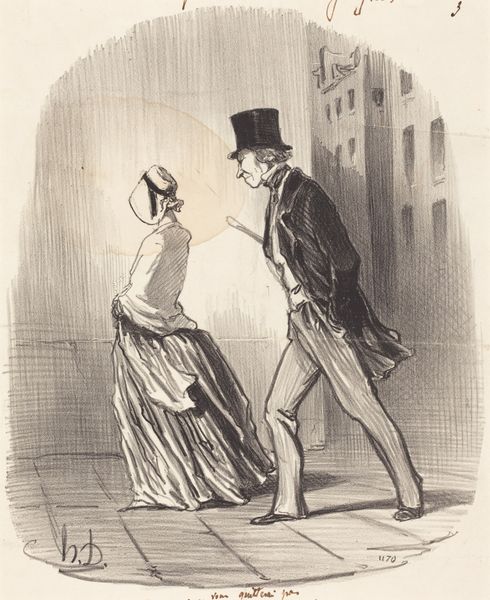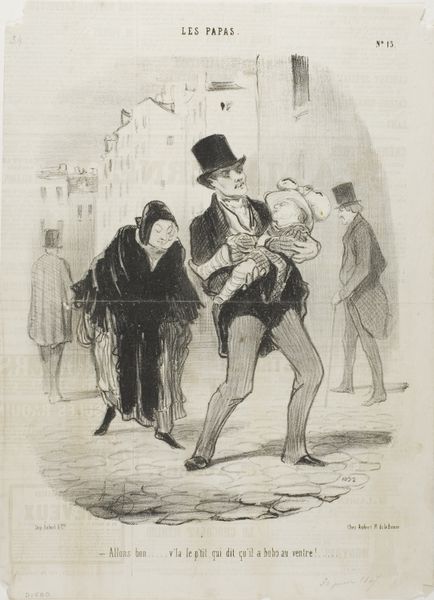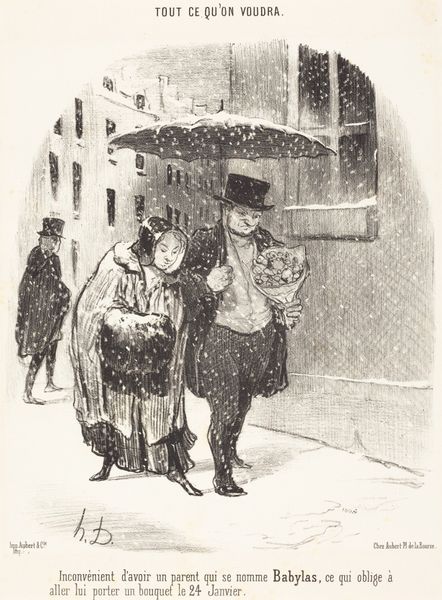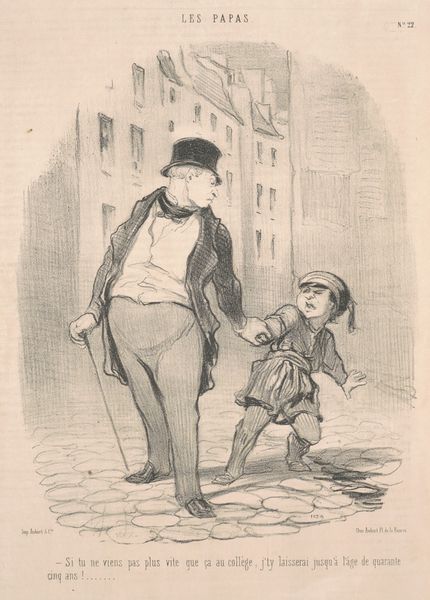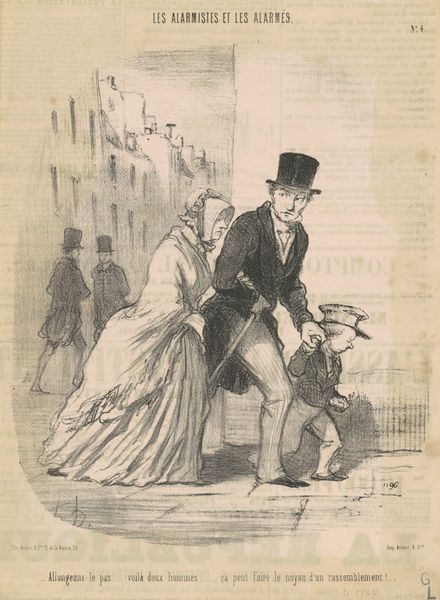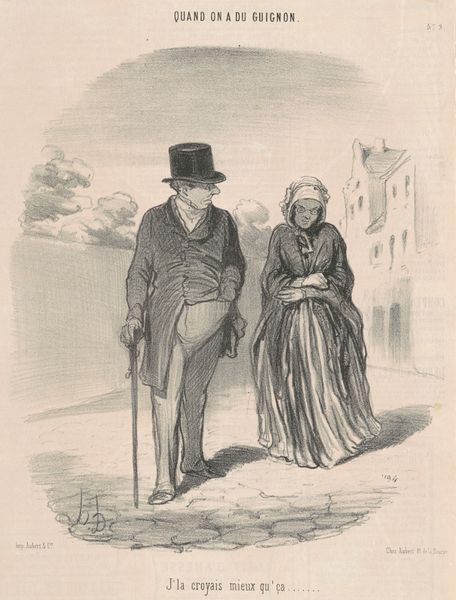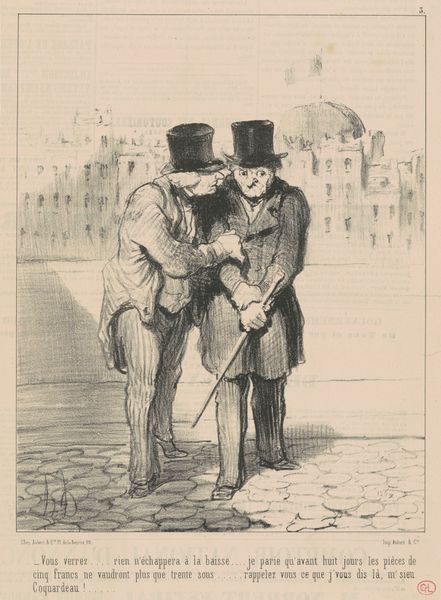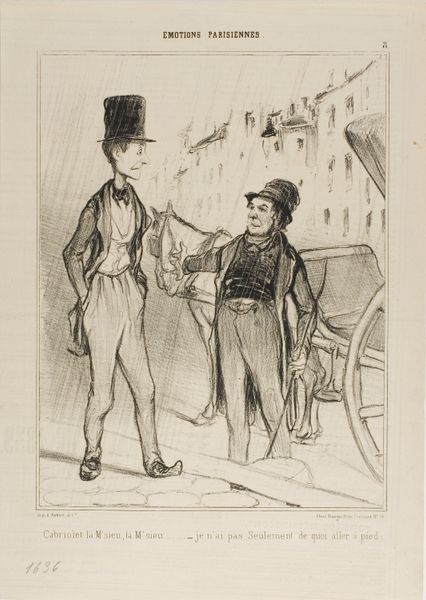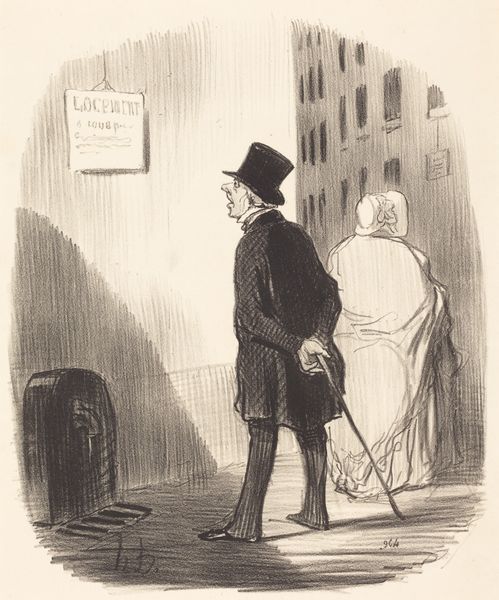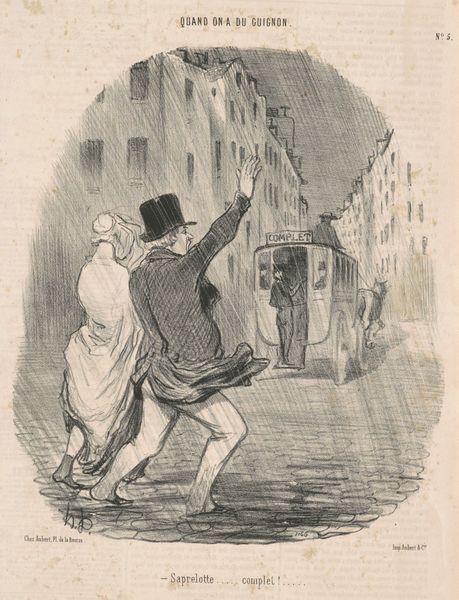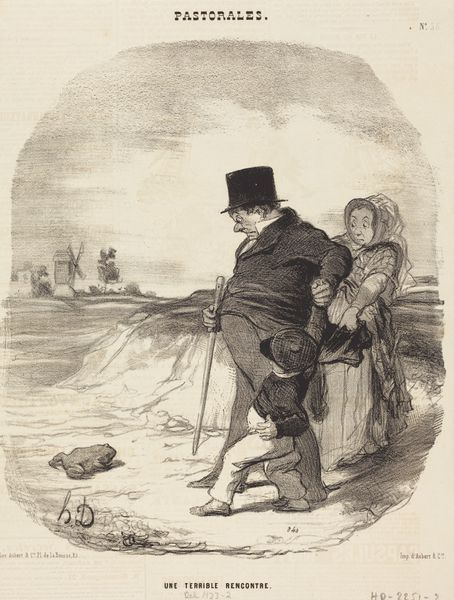
drawing, lithograph, print, pen
#
portrait
#
drawing
#
lithograph
# print
#
caricature
#
pencil drawing
#
pen
#
portrait drawing
#
realism
Copyright: National Gallery of Art: CC0 1.0
Curator: This lithograph by Honoré Daumier, dating back to 1848, is titled "Tu m'reprendras encore... a aller souhaiter...", which roughly translates to "You'll take me back again... and keep wishing..." Editor: My first thought? Gloom. There’s a dampness to it. The way the figures are shrouded and almost huddling against an unseen force—it speaks of a profound chill, visually and emotionally. Curator: Daumier’s work is so often a potent blend of social commentary and human experience. Given the revolutionary climate in France at the time, it’s tempting to read into the power dynamics between the figures. Is the woman reliant on the man despite perhaps not wanting to be? Are they representative of larger systemic issues? Editor: Perhaps. Visually, I keep returning to the use of cloaks, scarves and shawls, the almost medieval connotations of cloaking oneself in fabrics to conceal or signify rank. Are these protective layers also intended to distance these individuals from a turbulent outside? Curator: That's an interesting observation regarding the protective cloaks. Daumier frequently depicted the Parisian bourgeoisie and their complex relationships. One might interpret those wraps not merely as shielding from weather but as visual barriers erected to reinforce social stratification and gender expectations. Her head covering, her posture – they become symbols of societal constraints. Editor: Yes, and how brilliantly these heavy fabrics contrast against the hard vertical lines of buildings, those rigid unfeeling backdrops. Those buildings are practically faceless in this urban landscape; the artist uses tone so economically but tells so much. It’s almost stage-like, setting the tone, with a mood-enhancing sky. Curator: Daumier's skill lies in embedding socio-political messages within seemingly ordinary scenes, revealing the tensions simmering beneath the surface. By understanding his role as both artist and engaged observer, we see how even simple caricature can become a potent form of social criticism. He spotlights a quiet but devastating exchange of power. Editor: Exactly. Now looking again with these ideas in mind I sense now a deep seated understanding by Daumier about people. I notice not so much darkness and chillness, but the glimmer of warm tones amid adversity. Curator: Reflecting on the sociopolitical context interwoven with Daumier's visual vocabulary helps underscore this work as more than mere caricature; it stands as testament to societal pressures on intimate interactions and individual autonomy during tumultuous times. Editor: It really demonstrates how artists can take something outwardly cold, gray, and detached—and breathe humanity into it. I won't forget these silent, visual articulations of societal conflict for some time.
Comments
No comments
Be the first to comment and join the conversation on the ultimate creative platform.
